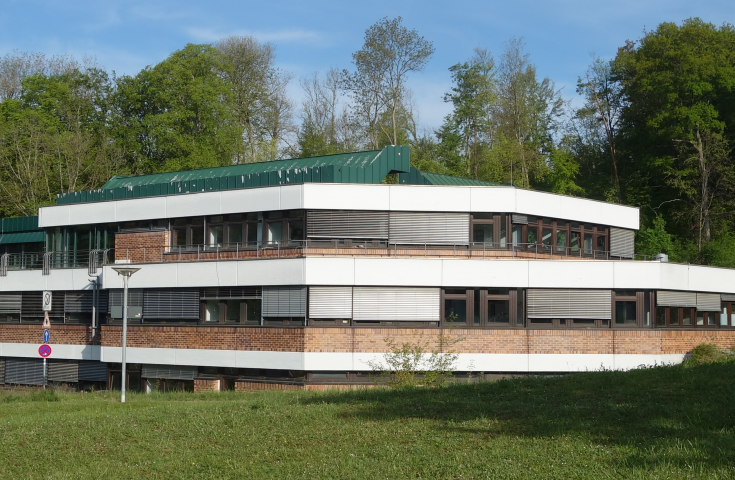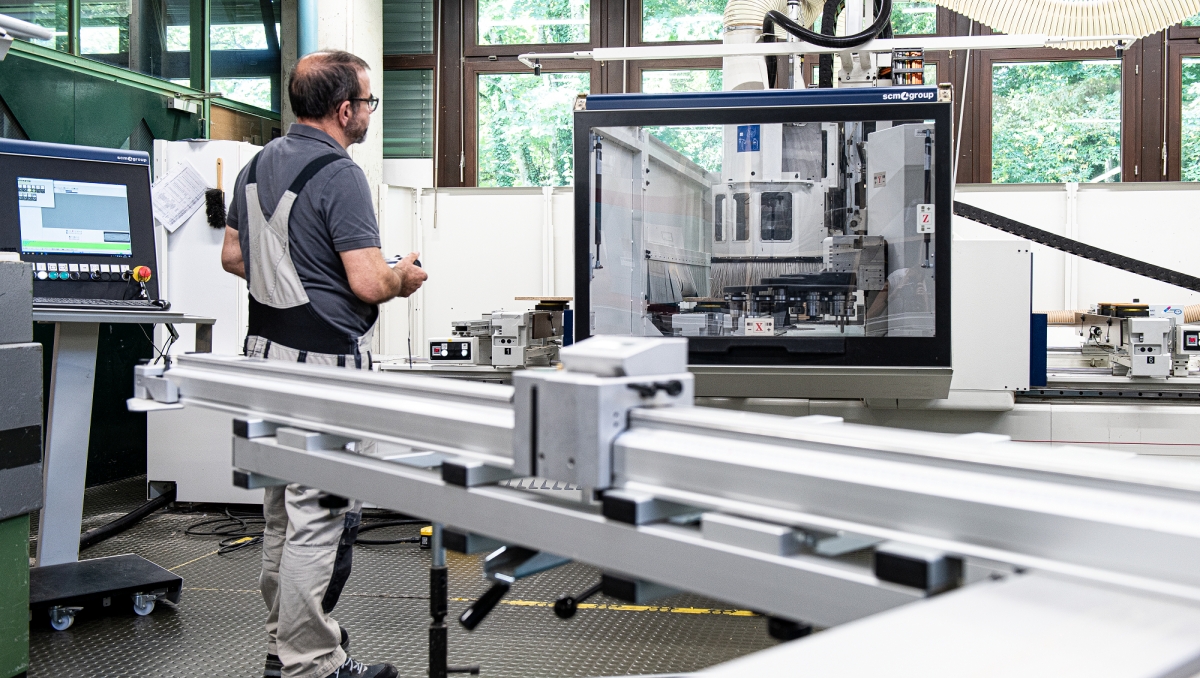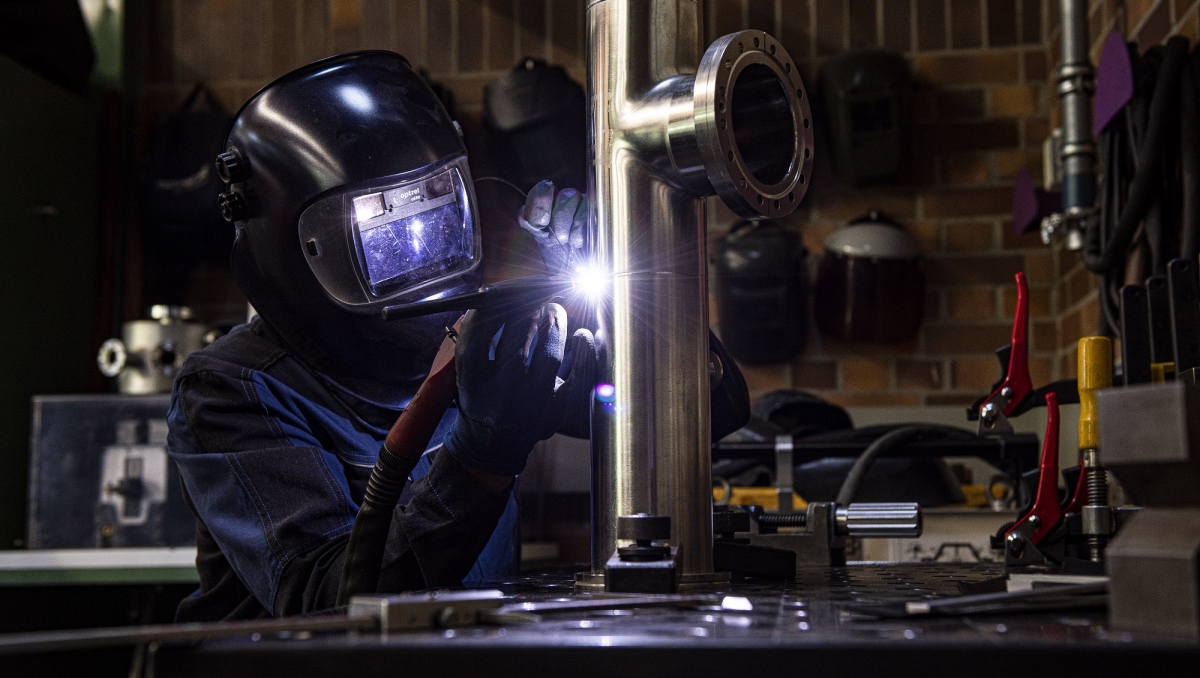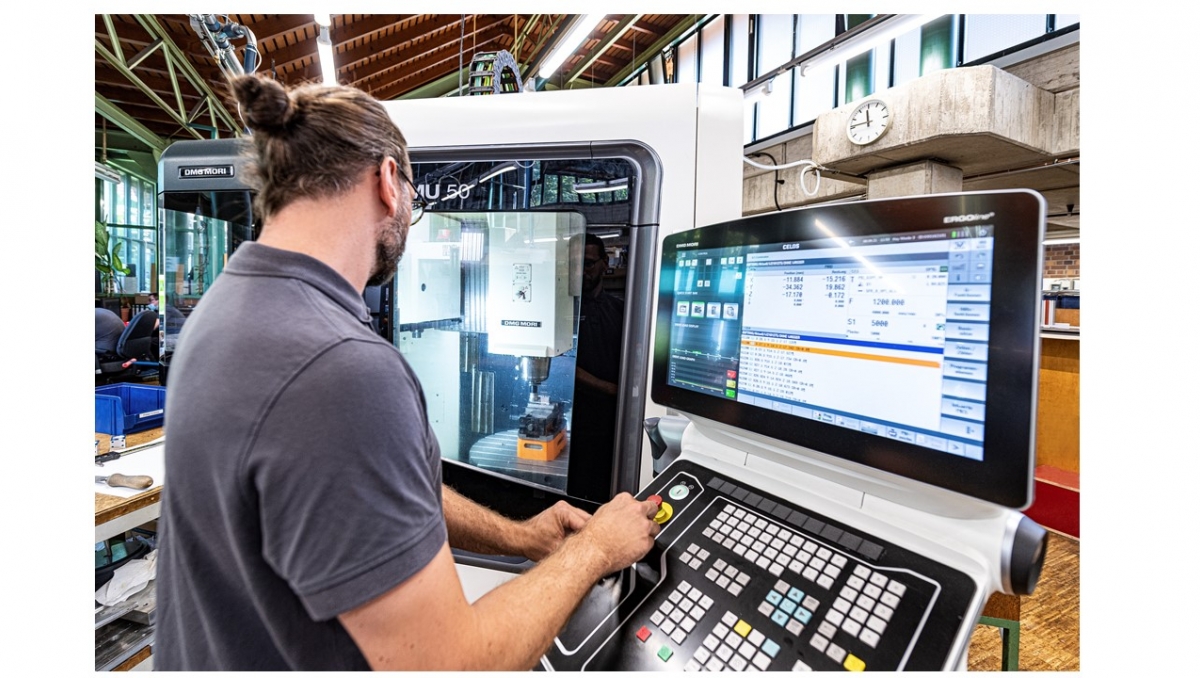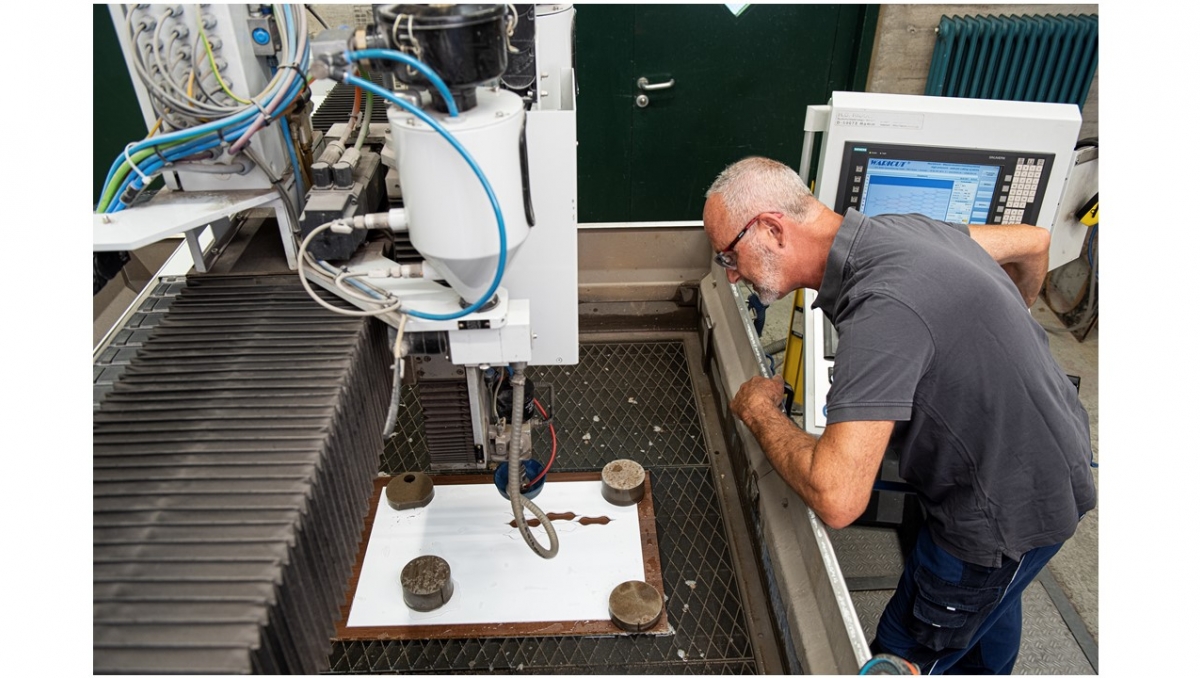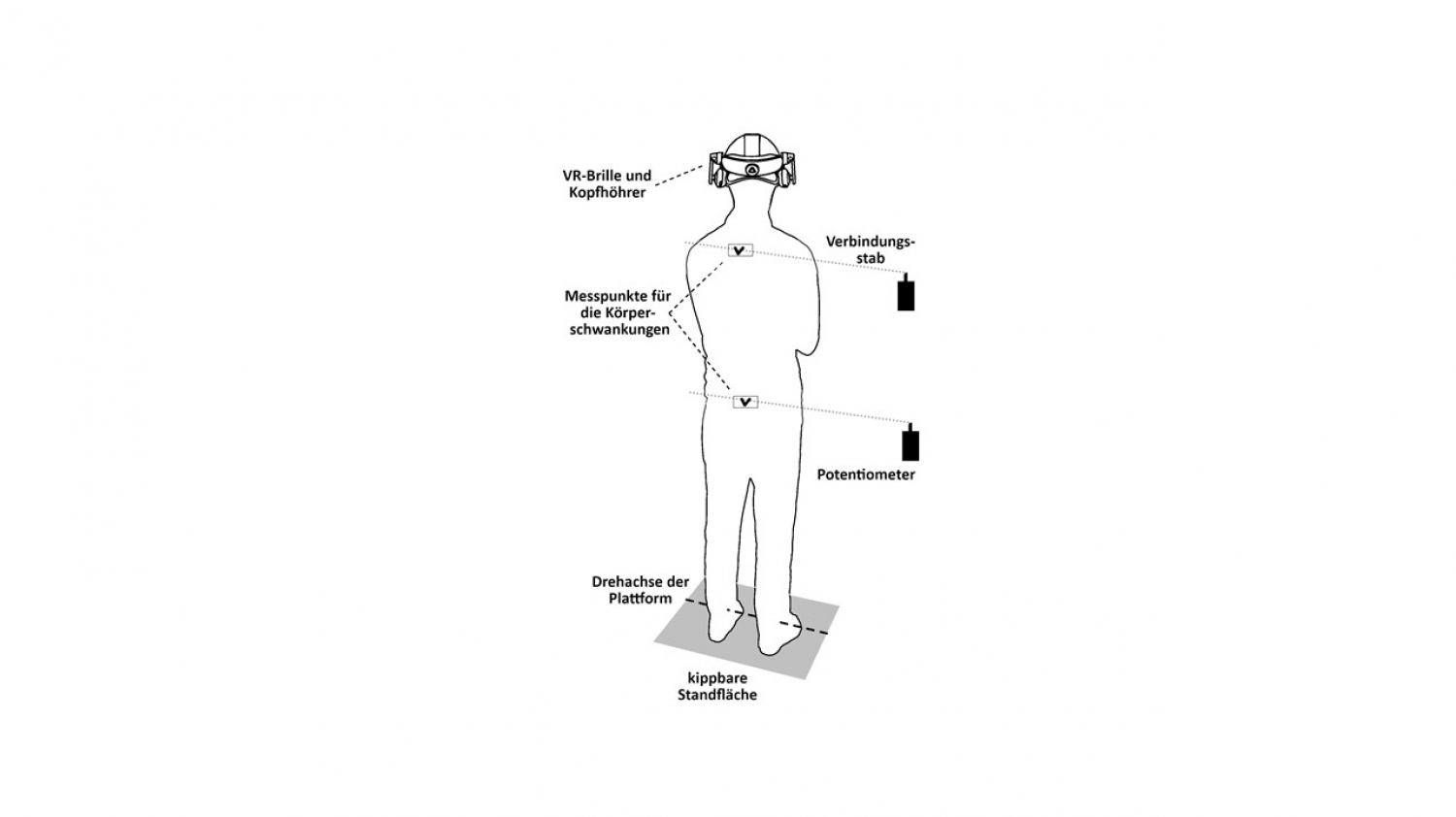Balance – an example from the field of sport science
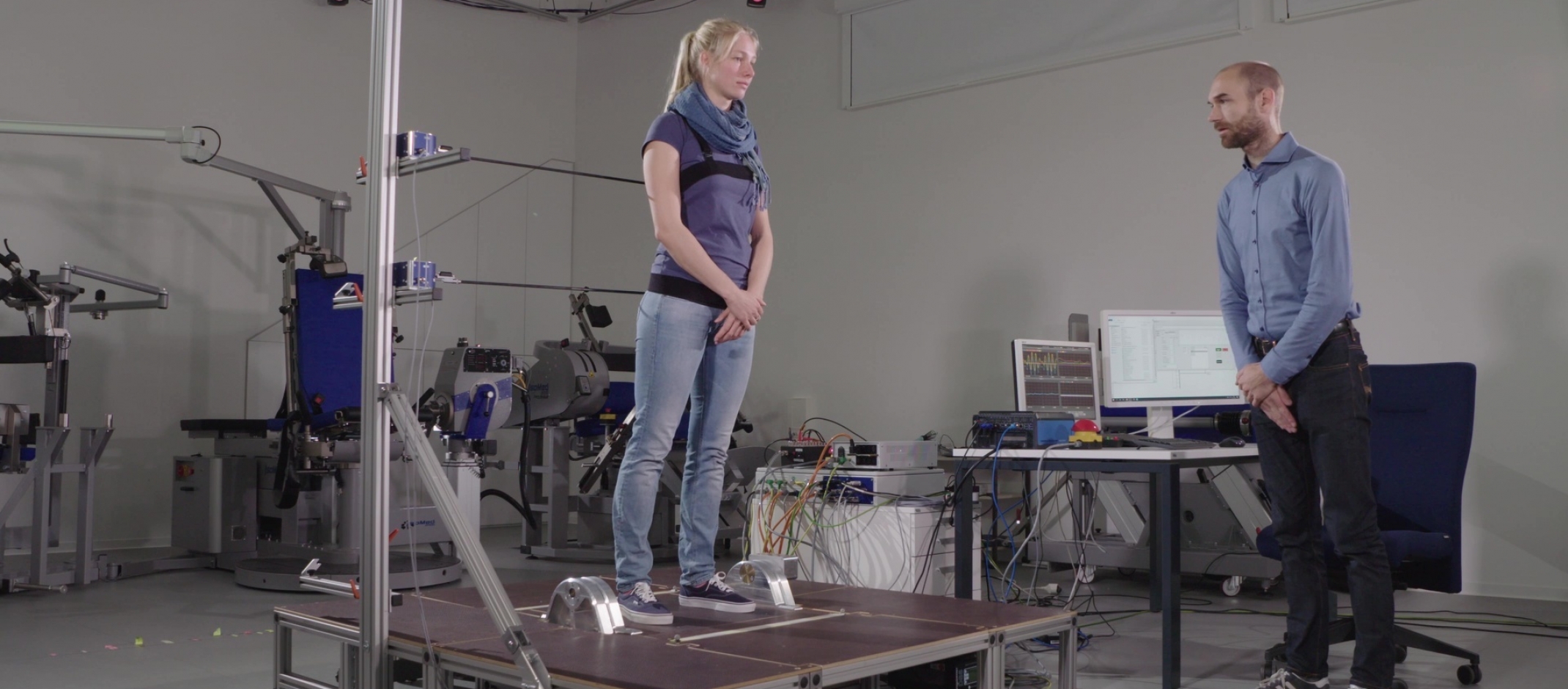
The mechanics team in Scientific Engineering Services constructed all of the lab's non-electronic components, equipment and experimental furnishings. In addition to providing relevant advice, the team's 28 staff and 11 apprentices/trainees have access to a wide range of machine tools, welding equipment, machines for working with metal, wood and plastic materials, as well as a paint shop and a glass-blowing workshop. This means that the mechanics team can process a large variety of materials with millimetre precision, for example, using a high-pressure waterjet cutting system or various milling machines. At the same time, the team also designs and builds larger constructions, such as the HPRC's tilting platform.
Carpenter Georg Ritzi programmes and sets up the computer-controlled woodworking centre to build the wooden figures for the student exhibition "STAYIN' ALIVE". Generally, the modular construction of the woodworking centre makes it possible to build complex customized constructions out of wood, be it for interior furnishings/furniture or experimental set-ups.The mechanics team uses special and complex welding techniques that require years of experience, such as tungsten inert gas (TIG) welding, Here, metalworker Michael Wind welds a connection pipe for a high-vacuum chamber made of stainless steel. During this process, the pipe is flooded with argon gas to prevent air pockets from forming.Precision mechanic Simon Auer uses a computer-controlled milling machine with a swivel table for 5-axis machining. This type of milling enables the precise production of complex, three-dimensional pieces. Here an aluminium component is being machined for a measuring device used in the Department of Physics.
"The tilting platform is the most important part of our balance lab", says Professor Markus Gruber, who leads the Training and Movement Science team in the University of Konstanz's departmental section Sport Science. With test persons standing on it, the computer-controlled platform can be tilted according to pre-defined sequences with high precision. "This means we have a targeted, comparable means of disturbing the balance of the test persons using the platform. And we can observe how the human body reacts to and compensates for these disturbances", Gruber explains.
But how do you turn these observations into reliable numbers? The platform helps automatically: In preparation for each experiment, two rods are attached to a test person – one at the hip level and one at the shoulder level. The sensors at the end of these rods record their positions 1000 times per second and thus make it possible to calculate the test person's movements on the millisecond scale. With the same level of precision, a sensor below the tilting axis of the platform measures the torque, i.e. the total rotational effect of all the forces, exerted on the test person's ankles during the experiment.
This is how the tilting platform constructed by Scientific Engineering Services contributes to research at the University of Konstanz's HPRC, where researchers examine all facets of performance, movement and physical stress – from the interaction between nerves and muscles to the measurement of strength and movement as well as the topics heart/cardiovascular system, metabolism and, of course, balance.
https://www.youtube.com/watch?v=zsC_B-AsQxUVideo portraying Lorenz Assländer and his research in the Konstanz balance lab along with the described tilting platform.
Usually, the experiment and corresponding measurements are taken while test persons stand on the lab's platform. Recently, however, researchers in the team led by Professor Markus Gruber, in particular Dr Lorenz Assländer and his colleagues, have begun examining how balance works in artificial worlds. They do so by combining the tilting platform with virtual reality (VR) technologies. "With the Scientific Engineering Services' collective expertise in mechanics, electronics and development engineering, it is much easier to link the different systems we use, i.e. the tilting platform and a VR system", says Lorenz Assländer.
© L. Assländer & S. Streuber (2020) PLoS ONE 15(10): e0241479Some of the experiments using the tilting platform take place in virtual reality. The test persons wear VR goggles that manipulate their environment in a targeted way.
Virtual reality goggles and other VR technologies have been used before in research on balance, but they previously often only achieved moderate success due to technical limitations. However, in the last few years, VR technologies have improved rapidly, so that some of the earlier technological hurdles no longer apply. "In one of our studies, we found that, when compensating for targeted disruptions of their balance on the tilting platform, the test persons' movements were the same, regardless of whether they completed the experiment under "real" conditions without VR goggles or in virtual reality. This is the case as long as the VR environment is realistic and includes realistic details", Lorenz Asslender explains.
Current VR technologies can thus be used in research on balance to examine interesting new research questions that would be difficult to explore under real conditions. The main advantage is that it is possible to manipulate the visual information shown to test persons in almost any way. "This makes VR a very powerful tool to find out which of the information in the visual scene the nervous system uses to maintain balance", says Lorenz Assländer. "Since we can work very closely with developers in the Scientific Engineering Services, we are able to connect these instruments with other experimental set-ups and thus to implement complex VR projects here at the University of Konstanz."
Dr. Daniel Schmidtke
Verwandte Artikel:
